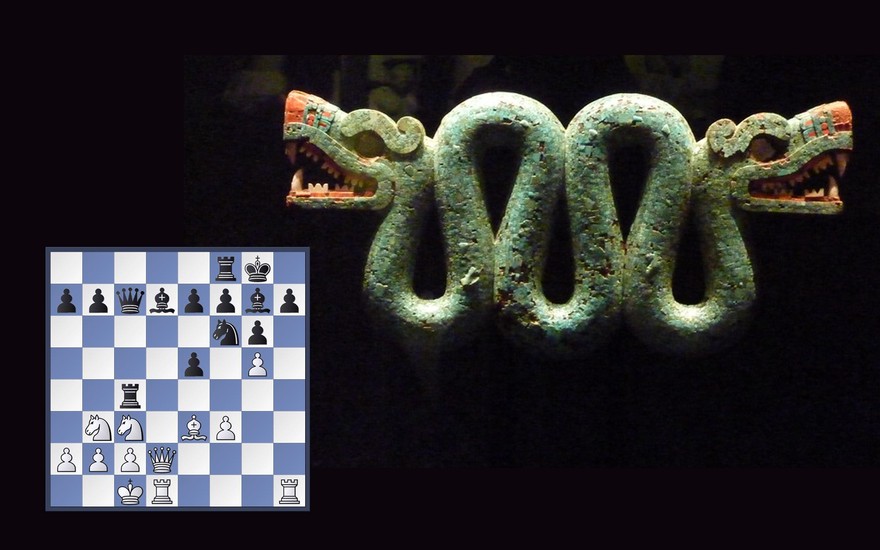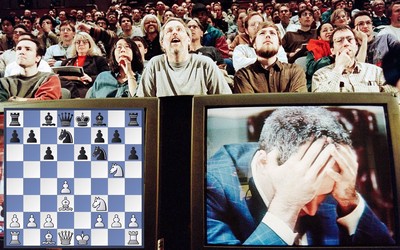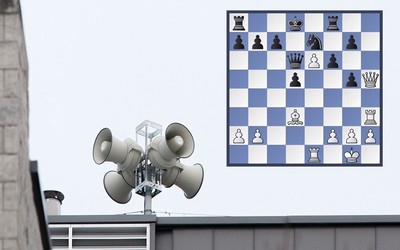
Matthew Dorey's Flickr photostream (Creative Commons)
Two-headed dragon
I'm reflecting on some the most memorable, interesting and entertaining games that I've played in over 25 years at the board. I hope you will enjoy them.Game 3
J.Eglinton – D.Shapland
Manchester Autumn Congress
Manchester
14th September 1996
Sicilian Defence: Dragon Variation, Yugoslav Attack
When I first started playing chess I briefly selected the Pirc Defence (1...d6) as my first choice defence against 1.e4. However, I was soon dissuaded from this in favour of the more popular and more ambitious Sicilian Defence. In particular, the Dragon Variation.
It’s easy to see why so many amateur players in my generation chose the Dragon as key weapon in their arsenal. For a start, the name of the variation sounds intimidating and romantic. But, from a practical perspective too, the variation promises complex and active play for Black and the main ideas and tactical themes are relatively simple to pick up. If you are predisposed to play in a counter attacking style with Black, then the Dragon is an excellent choice.
Of course, there are draw backs too. The game featured in this post was played in 1996. Since then chess databases and the strength of chess engines have advanced significantly and the volume of engine assisted opening theory has exploded. It is now a huge effort to keep track of the all the wrinkles in the Dragon’s skin. Even when I started out learning the Dragon, I quickly became aware of the depths one had to go to in order to run the gauntlet over the board in the most complex lines. Analysing variations starting at move 16 very soon became critical. This game is a case in point as you’ll see I had unearthed something ‘special’ for my opponent on move 18!
In the position given in the image header above, White has just played 18.g5 and has invested two pawns to open lines against the Black king. At this moment the approach appears to have paid off. Black’s knight on f6 is under attack and if it moves, White will capture the bishop on d7.
The situation looks desperate but Black has an interesting resource at his disposal. See if you can find it. The solution appears in the game commentary that follows.
I’ve played dozens of over-the-board games (and dozens more in online correspondence) in the Dragon Variation with both Black and White and I always look forward to my next game in this opening with either colour. Sadly however, the Dragon has pretty much disappeared from my opening repertoire these days. This is certainly not to do with me having changed my assessment of its veracity. I still think it gives Black great opportunities to play for a win if he knows what he’s doing. The problem for me was that so many White players ducked the mainlines and used ‘Anti-Sicilian’ systems that I simply got fed up of not getting what I wanted from the opening. I do still play the Dragon with Black when I know my opponent is likely to play a Yugoslav Attack and I always enjoy playing against the Dragon with the White pieces.
The commentary below does have a little bit of opening theory in it, but it’s certainly not intended to be a comprehensive discussion of one of the most complicated and intensively studied systems in all of chess.
More blog posts by inter_mezzo

Kasparov's ruin
I'm reflecting on some the most memorable, interesting and entertaining games that I've played in ov…
Anything but quiet
I'm reflecting on some the most memorable, interesting and entertaining games that I've played in ov…